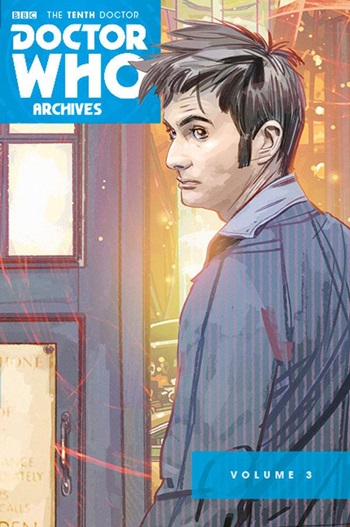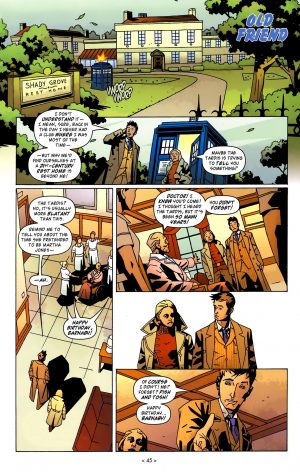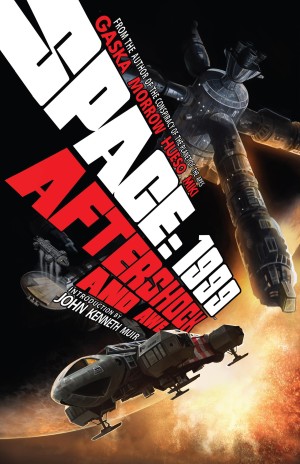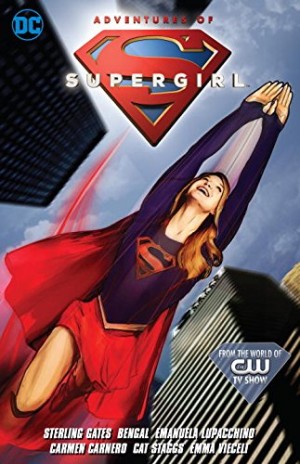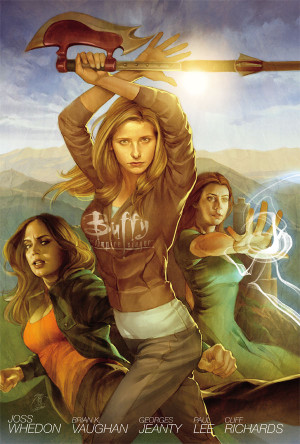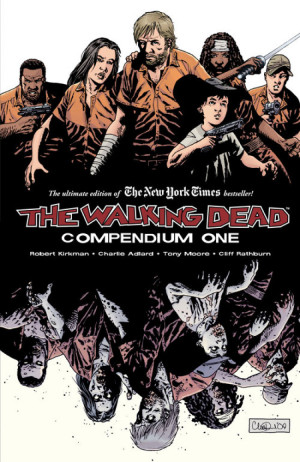Review by Ian Keogh
Barring twenty or so pages, this entire book is written by Tony Lee, continuing the story he began in Volume 2. It’s far more entertaining than the opening sequence featured there, consistently unpredictable, and with plenty of well plotted surprises.
In the earlier stories the Doctor, David Tennant version, picked up two new companions in 1920s Hollywood, Emily Winter and Matthew Finnegan, and the pair of them undertake one hell of a journey during this content, although pulling in different directions. It’s a very ambitious plot, avoiding the obvious, varying the stories told as the bigger picture continues, and is convincingly character based. Beyond the Doctor, and Martha Jones for a single story, the entire cast are Lee’s creations, and they’re almost all very effective, well motivated for what they do. The one glaring exception is a character carried over from the earlier story who completely changes their mind about their allegiance. Given what happens to them, this was planned from the start, but it’s not very convincing, and all too convenient.
That, though, is one few steps Lee puts wrong. He has a good ear for Tennant’s dialogue delivery, avoids the cheap dramatic option of killing people not from the TV show, or at least those we care about, but what he does instead is very interesting and has a shifting ethical approach. On a technical basis it could be considered everything is too tidily resolved, but it slots into place nicely, and Lee is still throwing surprises into the final pages. All in all, very impressive, and so is the coda closing the book in which the Doctor meets another companion.
Matthew Dow Smith draws more pages than anyone else, and improves on his work in Volume 2 with fewer faces strangely covered in shadow for no good reason, and panels where his art has the space to breathe. He also writes a short piece, about a man who throughout his life keeps seeing the Tardis, which is touching and innovative. Another artist having a try at writing is Al Davison, but while his pages are beautifully drawn, a plot about the Doctor’s dream takes the easy options. His art on ‘Tesseract’ is also admirable, and a complete contrast to the cartooning of Blair Shedd that follows. If anything, it indicates the Doctor has joined the pantheon of characters able to thrive under numerous artistic interpretations. The other contributing artist is Kelly Yates, on a short, strangely choosing to have his characters overly demonstrative. It’s for a plot by Jonathan L. Davis where the motivations are never clearly explained.
A few mis-steps don’t negate the overall wonder, and merging what in the USA was released separately as Tesseract and Final Sacrifice, highlights how tightly the background elements have been embedded while other stories take place. Volume 3 of the Tenth Doctor Archives is a compilation any Doctor Who fan should enjoy. Due to licensing restrictions this book is technically unavailable in the USA, but can be easily found.
